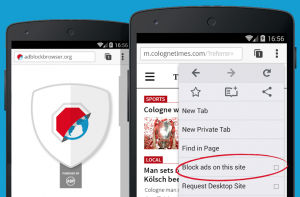Ad Blocking Tops Publisher Concerns in AOP Census
- Friday, October 2nd, 2015
- Share this article:
 The level of tension in the publishing industry around ad blocking was laid bare yesterday when the Association of Online Publishers (AOP) revealed the results of its seventh annual Content and Trends Census.
The level of tension in the publishing industry around ad blocking was laid bare yesterday when the Association of Online Publishers (AOP) revealed the results of its seventh annual Content and Trends Census.
65 per cent of respondents cited ad blocking as a threat to the publishing business model – remarkable statistic given that it has never figured in the Census before this year. 19 per cent of respondents called out as blocking as the most significant problem facing their industry. Other threats identified for the first time include ad fraud, and the rise of brands and agencies as content creators, both cited by 35 per cent of respondents.
Despite these challenges, the study found that publishers are on the whole positive about opportunities within digital publishing. Mobile continues to attract positive sentiment, with 81 per cent and 77 per cent respectively considering smartphones and apps / digital editions as key prospects for growth. 85 per cent of publishers view content marketing as an important area of investment.
Mobile advertising remains strong, with 63 per cent of publishers reporting that they have achieved growth in smartphone and tablet ad revenues over the last 12 months. Responsive design is now the leading method of maximising site delivery on mobile devices, with 79 per cent of publishers applying it across the majority of their portfolios. The top business priority for publishers looking to capitalise on mobile is increasing growth in revenues from incremental advertising (50 per cent), with unique mobile ad formats cited as offering the most significant revenue-generation model (68 per cent), up from 53 per cent in 2014.
The report also highlights the continuing growth of video. 12 per cent of respondents said they had achieved over 10 per cent of digital ad revenues from vide. The study also identified that demand is greater than existing inventory across desktop, mobile, and tablet, with 54 per cent of publishers saying they could sell more video inventory, if it was available. Despite this confidence, 29 per cent of publishers do not consider growing video to be a business priority, citing complexity of technical requirements (25 per cent) and the selling process (25 per cent) as obstacles, along with the fact that two thirds of publishers (64 per cent) derive less than five per cent of their digital ad revenues from video.
The study also found that increased integration with social media platforms provides a key vehicle to drive audience growth. Facebook and Twitter dominate as the most used social media channels for sharing and promoting content (both 97 per cent), with 52 per cent of respondents looking to increase usage of Facebook, compared to 14 per cent for Twitter. WhatsApp is a new social channel identified for 2015. 24 per cent of publishers polled said they currently use the app to promote content, with 17 per cent saying they plan to increase their use of the channel.
“The 2015 Content and Trends Census highlights an optimistic outlook within the digital publishing industry with opportunities for investment and growth,” said AOP managing director, Tim Cain. “We need to work together to support premium publishers to combat identified threats, particularly ad blocking, given that the majority of publishers rely on ad revenue to provide free access to quality content.”
The report is free for AOP members to download here.

















